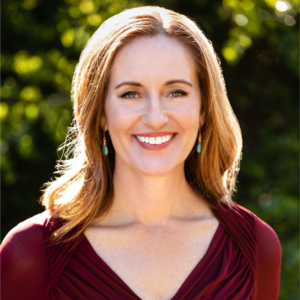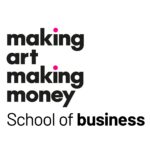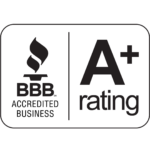How Does Self-Confidence Change An Artist?
How Does Self Confidence Change an Artist?
How Does Self Confidence Change an Artist?
(Transcription)
Artist, Carolyn Rose Forrester
QUESTION: As an artist, what is your biggest challenge?
Carolyn Rose Forrester: I really just didn’t have any confidence and no sense of purpose. I was just painting whatever I thought was pretty, here and there, and there was no focus at all.
QUESTION: What is your self-confidence like now?
Carolyn Rose Forrester: It’s completely different. I, I’m getting up, okay, I’m a school teacher. So I’m at work at 7 AM. But I’m getting up at 4:30 in the morning.
Ann Rea: Wow, I’m so impressed. I’m so proud of you. That’s awesome.
Carolyn Rose Forrester: And I’m organizing an art show. I’ve been so, you know, inspired by Khadeeja. So, I really have something to say now. And it used to be getting up for my job, I had to just drag myself out of bed, and you know, it was this burden. And now, I really want to get up and work on my art. And I want to do it first thing in the morning. And I feel like I’m getting my most important things done, first thing. And that’s changed my life. I, you know, I’m just so happy.
QUESTION: What have you shared with your students?
Carolyn Rose Forrester: I have to tell you, this one girl who, her SMARTER goal was to make three new friends by the end of the school year. And she cried, she teared up when she shared it, because, she’s really lonely. And she doesn’t know how to make friends. So we’re working on that with her.
Ann Rea: Aww, that’s awesome. You know what? A lot of people, people are lonely. You know, like not just little girls who have learning disability or challenges. This is a lonely planet, and this is one of the reasons why I designed the study partner program the way I did. You’re not, you have to meet at a video call, so you can see each others face. And you have to dig deep with one another. And I also tell everyone, “Hey if you meet with someone “and you don’t wanna meet with them again, don’t.” I don’t care. I just want you to make friends. Because that’s what life’s all about. Even if you have a supportive family and friends, and not all artists do by the way, they don’t understand what it’s like. And this community, they do understand what it’s like. To be an artist, who wants to sell, who wants to be recognized, who wants to contribute, and wants to sell their art.
QUESTION: What is The 4-Part Code for Artists?
Ann Rea: What I teach artists is how to crack the 4-part code. And what that means is, that’s how you can determine who your niche is for your art. And that, the 4-part code, is real simple. You understand your why, which is who you are, what you stand for, and what you stand against. It has everything to do with you. It’s got nothing to do with your art. Then from that, you can understand what your mission is. What’s the one problem you believe is really worth solving? It’s got nothing to do with you. It’s got nothing to do with your art. It has everything to do with way you can be of service. And then through the prototype project, you can experiment with your how. How are you gonna solve that problem using your art and/or your other resources? And who has that problem that’s worth solving? Your target market. So, that’s the 4-part code. And you don’t crack it all at once. So, you’ll notice students will get real frustrated, ’cause they haven’t cracked it all at once. Well, nobody damn well cracks it all at once. I mean, some people do. But you just, the most important part is the why.
QUESTION: What changed once you knew your ‘Why’?
Carolyn Rose Forrester: Gosh, I guess it just makes everything so clear. You know, and it’s helping me come out, be more of myself. Actually, my why is all about being true to myself. I can only be happy if I’m true to myself.
Ann Rea: Right.
Carolyn Rose Forrester: I am, you know, I look at how am I being true to myself? And so now I can clearly make choices and set boundaries. And, you know, no one’s ever perfect but, you know, it’s kind of like a guiding principle I can live by now.
Ann Rea: That’s awesome.
Carolyn Rose Forrester: And it definitely helps me as teacher, for sure.
Ann Rea: Right, right. And so, wow, that’s a pretty good one, that’s inspiring. I have to say, one of the things that has been really been very enriching for me is, my students, share, you know, during our one-on-one. They share their Whys, and they share how they arrived at their Whys. Then we take a look at their 4-Part Code, and it’s so inspiring. Like, it is, like, I gain the benefit of all of my students’ life lessons. And
And it’s pretty, there’s no self-help program, there’s no, you can’t get that. It’s amazing. You guys are so wise. When you do the process, you’re so wise.
Carolyn Rose Forrester: Mm-hmm, and I have to say that the Code to Joy exercises. I do it twice a day.
Ann Rea: Awesome.
Carolyn Rose Forrester: It really is, you know, I really see this emotional, the emotional stuff is where I get hung up.
Ann Rea: It’s where everybody gets hung up.
Carolyn Rose Forrester: Yeah, and you know, just moving past my fear. Moving past, you know, the fear is not going away.
Ann Rea: No.
Carolyn Rose Forrester: I can deal with it now.
Ann Rea: Well it’s about progress. It’s not about perfection, ’cause perfection doesn’t exist. And pursuing perfection is a very, it’s a train wreck. It’s just very stifling, because it’s an impossible and punishing standard. But by making progress, and the thing about emotion is that there’s two sides to that coin. It can limit you if it’s fear, or anxiety, or hurt. But you can flip it, and then you can gain energy. You obviously have the energy if you’re getting up at 4:30 in the morning. It’s changed something in you.
QUESTION: What have you learned is NOT true?
Carolyn Rose Forrester: The clarity I’ve gained. I used to think I had to be like someone else in order to sell my work, in order to be a real artist.
Ann Rea: Yeah.
Carolyn Rose Forrester: If I could change into someone else who’s more outgoing–
Ann Rea: You can’t do that anyway!
Carolyn Rose Forrester: More that, more whatever, which is a very judgemental stance. And so …
Ann Rea: Yeah, you know, let me tell you, so the co-founder or CreativeLive, Craig Swanson, he and I would meet occasionally. And one of the things he said to me was really, really, powerful. And, you know, he built that company from scratch, right? And it’s pretty huge. But one of the things he told me was, the two most disempowering things you can do in his view is, number one, compare yourself to other people, ’cause you’re always gonna find somebody better, more accomplished or whatever. And then the second thing you can do is not be present. And not just appreciate where you are right now and all you’ve accomplished already. That was really powerful advice. And I think it’s true. Yeah, so what you just said is really significant. And if you read Russell Simmons’ Do You, it expands on this deep understanding that if you’re gonna try to be like another artist, it’s gonna be a train wreck. It’s never gonna work out, because it has to come from you, your heart and your soul, to have any significance, to have any meaning to you or to other people. So, there isn’t anyone else you can be. So what you wanna do is dig deep, and be your true, authentic self. And if you’re not sure of the mechanics of how, “Oh, how do I do that,” you know, read his book, and apply to enroll in MAKING Art Making MONEY. We’ll walk you through that process.
QUESTION: Should artists apply to enroll?
Ann Rea: If someone was sitting on the fence and they weren’t so sure about applying to enroll in the Making Art, Making Money program, what would you honestly tell them?
Carolyn Rose Forrester: I would say it’s the best training for an artist who wants to sell their work. It really is. There’s nothing like this out there. This, you’ve got to dig deep to find out who you are. You’ve gotta do the work. But there’s nothing else like this.
Ann Rea: Awesome. And how has it been connecting with study partners? Are they, ’cause most artist communities have a lot of jealousy and competition.
QUESTION: What’s the community been like for you?
Carolyn Rose Forrester: It’s been wonderful. You know, there are some people I connect with more strongly.
Ann Rea: Of course.
Carolyn Rose Forrester: And I think that’s always the case. It’s just a feeling that we’re all in this together. And no one seems to hold back with help or assistance. You can just post a question or call someone up and they, you know. That’s one of the biggest reasons I joined. Because, you know, I live in a small town. There’s no one here. Actually, it’s a university town, so that’s even worse. There are professors who think they know the art world.
Ann Rea: I know.
Carolyn Rose Forrester: And I guess that you know the competitive art world. But that’s not a part of what I want to participate in.
Ann Rea: Right, right, and you don’t need to! That’s the good news, right?
Carolyn Rose Forrester: Yeah.
Ann Rea: You don’t need to, why do it? You know, let ’em have at it. In the meantime you can enjoy the community, you can make significant progress not only in selling your art, but in your life.

About Ann Rea
Ann Rea is a San Francisco-based artist and the creator of The Making Art Making Money program. Her art and business savvy have been featured on ABC, HGTV, Creative Live, The Good Life Project, in the book Career Renegade by Jonathan Fields, by the San Francisco Chronicle, Art Business News, Fortune, and Inc. Magazines. Rea’s artistic talent is commended by her mentor, art icon, Wayne Thiebaud.

